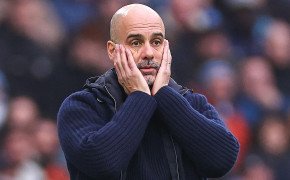The importance of the national football teams to South American countries means there is real glory in pulling on the shirt. t is a magical moment when the camera pans down the team line-up as the national anthem plays. Those in the starting XI may well be thinking of the school teacher who said he would never amount to much, or the girl who snubbed him because he was poor. Now, though, there is no doubt about it: he is important.
The flip side of the glory is the criticism he will receive if results are disappointing. There has been plenty of that flying around as the continent’s World Cup qualification campaign reached its dramatic crescendo. Argentina’s players had to endure lots of abuse before they finally clinched their spot in Russia – against an Ecuador side playing in an atmosphere that had already turned toxic. The early leaders, Ecuador dropped off alarmingly. But with two rounds to go they still had a chance of making it over the line. They destroyed any such possibility by sacking coach Gustavo Quinteros, alienating some of their most important players and appointing a caretaker who named an experimental squad. Had they kept calm they would have given themselves more of a chance, and that final game against Argentina might have been a do or die struggle. But under the pressure of bad results the crowd had turned against Quinteros and personal relationships inside the local FA were breaking down.
Now it is Chile’s turn. Last Tuesday’s 3-0 defeat to Brazil brings an end to the most glorious chapter in the history of the Chilean national team. The generation spearheaded by Alexis Sanchez and Aruro Vidal came third in the 2007 Under-20 World Cup, in 2010 and 2014 played the best senior World Cups in the country’s history – with the exception of 1962, which they hosted – and then finally won some silverware, twice.
After 99 years of trying they landed the 2015 Copa America on home soil – and to prove it was no fluke they did it again a year later in a special centenary version of the tournament in the USA. And even more memorable than the bare achievements was the manner in which they came about. Chile played with a refreshing commitment to attack, throwing men forward, constantly trying to pressure the opposition and create two-against-one situations close to goal. At their best, they really made the ball fizz and were a delight to watch.
The spectacle now, though, may well be supplied by them turning in on themselves now that the golden era is over. Chile have missed out on Russia, and will not have another competitive game until June 2019, by which time a new and much less exciting generation will be wearing the shirt.
Whatever happened, the good times were set to come to an end in Russia next year. Instead, the show has closed a few months earlier, and scapegoats must be found.
At half-time in the defeat by Brazil, was Alexis Sanchez really on social media? And the message posted by the wife of captain Claudio Bravo, alluding to a lack of professionalism and an excess of alcohol in some members of the squad. Reserve left-back Eugenio Mena had been caught drunk driving a few months ago – and forgiven by coach Juan Antonio Pizzi. It all pointed, said some, to a group out of control. Who did they think they were? Success had spoiled them. Remember that case of Arturo Vidal being involved in a drunken late-night car crash?
It is worth recalling, though, that the incident with Vidal happened more than two years ago, under previous coach Jorge Sampaoli, during the early stages of the 2015 Copa America – at a time before Chile had won anything. Chile did not decline because they adopted this kind of behaviour. It has always been part of their mix.
“We are a difficult group to handle,” said Bravo some time ago. There has long been a battle for supremacy between Sanchez and Vidal. But creative tensions and a touch of a rebellious spirit, late-night escapades and all, are part of what made Chile what they were.
Of course it could not go on for ever. Football is a dynamic process. One of the reasons for Sampaoli jumping ship at the start of 2016 was a fear that he had taken the team as far as it could go – their last game under his command was a 3-0 loss away to Uruguay.
Instead, for a while, it got even better. Pizzi was wise enough to work inside the guidelines laid down by his predecessor, and his low-profile approach worked well. The 2016 Copa America win is an even more impressive one than that of the year before because Chile could not count on home advantage and because the 7-0 quarter-final destruction of Mexico must stand as the finest performance in the country’s football history, a high spot that should never be forgotten.
It was clear that the golden generation were running out of steam. Chile’s model of play demands high intensity, speed and constant movement. But the team were no longer able to fizz the ball around as they had done at their best, and the goals dried up. In their last six competitive games, they were unable to score in five of them.
In hindsight they should probably have taken a reserve squad to the Confederations Cup and given the first-teamers some time off – something they have not had since 2013. But, continental champions for the first time, they wanted to bask in the glory of representing South America on the international stage. And perhaps they were right to do so. It may be a while before they get the chance again.















